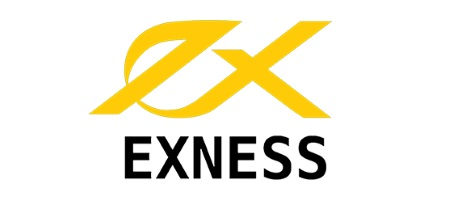find the Best Forex Broker for Your Trading Needs
Broker Selection Simplified - Learn, Compare and Choose with ease. Our main goal is to guide beginner traders to the regulated side of the market which is the ONLY guarantee for a safe and fair trading experience. Find the best Forex broker with simpyForex.com!
Read more in the About Us section and How to choose a broker guide.
Start your Trading Journey with Confidence and Expertise!
best online broker reviews:
SEARCH BROKERS BY:
INSTRUMENTS
Platforms
COUNTRY
HOW TO CHOOSE A BROKER
Navigating the World of Forex Brokers - Your Expert Guide to Choosing the Right One! Finding the right broker can be a daunting task, especially with the vast number of options available. Our expert guide, "How to Choose a Broker", is here to make the process of finding the best forex broker easy for you. It will teach you how to evaluate and compare different brokers, understand what to look for in a regulated and trustworthy broker and provide tips and tricks from our team of experts on how to find the best Forex broker for all your trading needs! Most importantly, all brokers we offer are heavily regulated and are safe to trade with! Take the first steps on your trading journey with simplyForex.com
Learn moreBeginner-Friendly educational resources from the Pros
Start Your Forex Trading Journey with the Right Tools! Our educational materials are designed to give you a solid foundation in the world of forex trading. Whether you're new to trading or have some experience our team of experts has created a wide range of resources to help you understand the market. From easy-to-digest guides and articles you'll learn the ins and outs of the forex market allowing you to make informed decisions about brokers and trading strategies. Our goal is to provide you with the knowledge you need to navigate the market with confidence and get started on your forex trading journey.
Learn moreFREQUENTLY ASKED QUESTIONS
Forex trading is the buying and selling of currencies in the foreign exchange market. It is a decentralized market where participants buy and sell currencies through electronic platforms or brokers. Forex trading operates on a global scale and across multiple time zones, making it accessible for traders from all over the world. It’s a dynamic market with high liquidity, meaning large volumes of currencies can be traded without significantly affecting the market price. The objective of forex trading is to exchange one currency for another in the expectation that the price will change, allowing traders to profit from the fluctuations in currency values. Read more in our Forex basics section.
A forex broker is a company that acts as an intermediary between traders and the market. They provide traders with access to the forex market and often offer additional services such as trading platforms, analysis tools, and educational resources. Choosing a trusted and regulated forex broker is crucial for traders to ensure fair trading practices and the security of their funds.
New traders often make mistakes such as over-leveraging, lack of proper risk management, and lack of understanding of the market and trading strategies. They may also fall into the trap of emotional trading, letting fear or greed drive their decisions rather than a well-considered strategy. In addition, beginners sometimes fail to adequately research and compare brokers, leading to a partnership with platforms that don’t align with their trading needs or experience level.
Leverage allows traders to control a larger amount of money in the market than what they have in their account. It’s a way for traders to increase their potential returns, but it also increases the potential for losses. Leverage is typically expressed as a ratio such as 50:1 or 100:1, which means that for every $1 in the trader’s account they can control $50 or $100 in the market. Leverage allows traders to take larger positions in the market with a smaller amount of capital.
Margin is the amount of money required to open and maintain a leveraged position in the market. It is the collateral that the trader must deposit in their account to trade on leverage. When you open a position the broker will “freeze” some funds, the margin, which is a percentage of the total position value required to open and maintain this position open, and those funds (margin) will be “unfreezed” and available once you close that position. For example a margin requirement of 2% means that the trader must have at least 2% of the total trade value in their account to open a position. The connection between leverage and margin is that leverage is the ratio of the total cost of position size to the amount of margin required to open that position. The larger the leverage ratio, the smaller the margin requirement will be. However it’s important to note that while leverage can amplify returns, it can also amplify losses.
Therefore traders must be cautious when using leverage and should always use risk management techniques to control their risk.
The amount of money you need to start trading will vary depending on the broker you choose. Some brokers have a minimum deposit requirement of as little as $10, while others may require a larger amount. It’s important to compare the minimum deposit requirements of different brokers before you open an account. In addition, while you can start with a minimal amount, it’s essential to only trade with money you can afford to lose, especially as a beginner learning the ropes. It’s also wise to consider the extra funds you might need for maintaining margin requirements and absorbing any potential losses without facing a margin call immediately.
To start trading forex, you will need to open an account with a reputable broker. You can do this by browsing through our website and comparing different brokers to find the best Forex broker for your trading needs. After you have opened an account, you can deposit funds and start trading. Once your account is funded, you should familiarize yourself with the trading platform provided by your broker and start by making small trades to gain experience. It’s also beneficial to take advantage of educational resources and practice with a demo account, if available, to build your skills and confidence before engaging in live trading.
It is crucial to have a solid understanding of the basics of the forex market and the different trading strategies and chart patterns available before you start trading. In addition, it’s crucial to be aware of the risks involved in forex trading, as well as the importance of risk management techniques such as setting stop-loss orders and only using capital you can afford to lose. Understanding the impact of leverage on your trades and being mindful of economic events that can influence currency markets will also help in making prudent trading decisions. We strongly recommend that you take advantage of our Educational section to gain the knowledge you need to make informed trading decisions.



